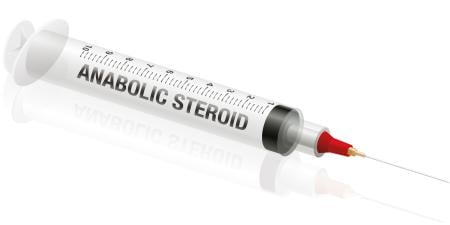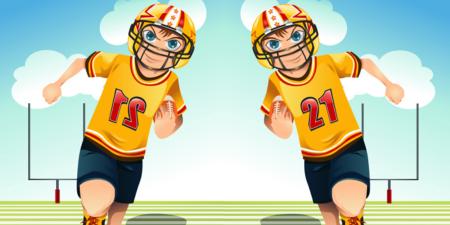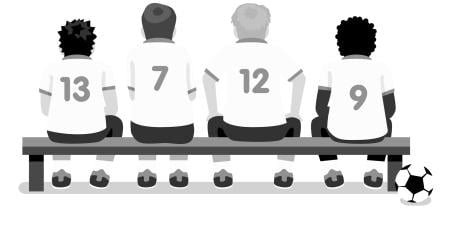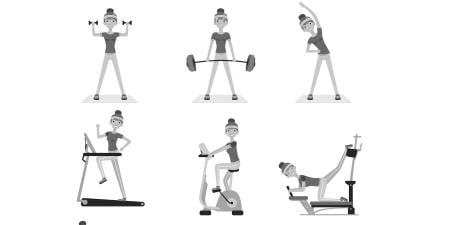Children, adults, and seniors are flocking to gyms, ball parks, and other athletic facilities to pursue one of their chief passions—sports. As we become more active in recreational and team sports we enhance our cardiovascular fitness, reduce the risk of hypertension, and reduce the chance of obesity, to name just a few health benefits. That is, as long as we stay injury free.
Unfortunately, many of these recreational athletes will succumb to sports-related injuries, one of the least-recognized public health problems in America today. Sixty-two million Americans will sustain injuries this year, spending $150 billion on health care services.1 And the largest subgroup of these injuries comprises those related to sports and recreational activities.
Preventing sports injuries
Of the 62 million individuals who sustain injuries, an estimated 12 million student athletes, aged 5-22, sustain sports or recreational injuries. They will lose more than 20 million school days and spend billions of dollars on health care.2 I contend that a significant percentage of these injured students will become inactive for a period of time lengthy enough to increase the risk of becoming obese.
Medical professionals, as well as the general public, have misconceptions about the magnitude of sports injuries. Most individuals in the lay public and the medical community believe they are bumps and bruises that do not have long-term pain, disability, and cost ramifications. They are wrong on all counts.
The good news is, however, that nearly 90 percent of sports-related injuries are avoidable. The Institute for Preventative Sports Medicine, Ann Arbor, Mich, has completed studies seeking effective and practical means to prevent sports-related injuries.3 For warm-weather sports, the Institute has focused largely on injury prevention in baseball and softball. These rank near the top in sports-related emergency room visits, according to the Consumer Product Safety Commission. Forty million people participate in organized softball leagues, not including pick-up games. Another 15 million, from little T-ballers all the way up to the senior level, play baseball.4
Sports-specific Studies
More than 70 percent of softball and baseball injuries result from sliding into a stationary base, a fixed immovable object.5 Many of these are severe and result in fractures, torn ligaments, and dislocated joints—with the promise of arthritis in the future. The base may appear to be a little white pillow, but it's more like an iceberg sunk in a concrete anchor beneath the ground. A person's ankle will break before the base will disengage.
The number of those sliding accidents would drop precipitously with the use of breakaway bases, which move upon excessive impact with a foot or hand. Studies published in JAMA performed at the University of Michigan and the Institute have found that break-away bases reduced sliding injuries by 96 percent compared with stationary ones, and led to a 99 percent reduction in health care costs.6 The US Center for Disease Control and Prevention extrapolated from this data the finding that breakaway bases could prevent 1.7 million injuries per year and save $2 billion in annual health care costs.7 While this research encouraged the current Bush administration to install breakaway bases on the White House T-ball field, the vast majority of fields in our country remain equipped with hazardous stationary bases. In fact, after a congressional hearing on the subject, the federal government changed fields at all military installations and federal prisons over to breakaway bases. Yet, only 15 percent of US fields have this equipment. So, as of 2004, guests of the nation's first family, those in the military, and federal prisoners are protected from this type of sports injury, while 85 percent of the public remains vulnerable.
An alarmingly dangerous practice is "heading" in soccer, where a player deflects or advances the ball with his or her head. Repetitive heading can lead to concussive symptoms and deficits in information processing and memory. Many such injuries occur in practice when the coach repeatedly bounces a ball off the next player's head, and punch-drunk players start wobbling around the field. We have found this scenario more common in the youth population. Using a lightweight ball, such as a beach ball, during practice, would significantly reduce the risk of head-impact injuries.
A study at the Institute revealed that more than 50 percent of soccer players had concussive symptoms (headache, blurred or double vision, ringing in the ears, or nausea) long after heading drills were completed. In addition, it was determined over a 2-year study that, as heading increased, memory ability started to diminish.8 What about helmets? At this time, no independent medical studies have shown any existing model can satisfy the 3 criteria for helmet use while heading: the helmet must have adequate capability to reduce the force of impact; it must "breathe well" so children do not overheat; and it must gain consumer acceptance—it should make the athlete look like Darth Vader, not like a nerd. An important lesson here is that every item said to prevent injury cannot be recommended to the public unless and until independent, published peer-reviewed studies support the use of the intervention. Scientific study must trump anecdote. Unfortunately, industry has a way of influencing what is and what isn't recommended. As medical professionals, it is our duty to expose false and slick marketing in the interest of protecting public health.
Equipment alterations that would reduce injuries in soccer include:
- padding on soccer goalposts that would reduce the force of impact by more than 60 percent. (Eighteen children over the past 13 years have died due to impact with an unpadded post. Goalposts must be made secure so they can't tip over, as well as being padded.)
- beach balls for heading drills in soccer. A recent study shows that nearly 50 percent of youth players suffer symptoms from concussions due to heading, which could lead to memory deficits.
- air system shin guards in soccer that would reduce the force of impact by nearly 80 percent.
Parents and coaches must also be aware of injuries in basketball, arguably the most dangerous sport of all. Close to 600 000 people per year go to the emergency room because of basketball-related injuries. The vast majority of the injuries occur to the ankle, often to players competing on a pot-holed surface, indicating that the safety of playing surfaces is key.
Heat-related Illnesses
Heatstroke figures among the deadliest of sports-related injuries. In light of heatstroke tragedies throughout the country, it is imperative that parents focus on preventing this completely avoidable, often-tragic scenario. During 2002, a high school student in Indiana died of heat exhaustion, as did a college football player at the University of Florida, and a professional football player with the Minnesota Vikings. Between 1997 and 2002, 21 student athletes succumbed to this preventable condition.3 Some very logical and easily implemented guidelines can completely eliminate fatalities related to heatstroke. During the past few years, the Sports Injury Advisory Group of the State of Michigan developed a number of recommendations relating to heat exhaustion in football players that easily can be applied to every sport and recreational activity.9 It is important to be aware that heatstroke also can occur while gardening or, for that matter, walking around Disneyland. Here are the guidelines:
1. Acclimatize to heat gradually. Early practices, during the first 7 to 10 days of training, for example, should be shorter and less intense, as should practices on abnormally hot or humid days. In addition, athletes should be encouraged to initiate their own conditioning programs several months prior to the beginning of the season. During the hottest weather, practice sessions should be scheduled in cooler parts of the day.
2. Pay attention to the humidity index. Both the temperature and relative humidity should be taken into account in determining the length of practice sessions. It has been suggested that if the sum of the temperature and relative humidity are equal to or greater than 160, precautions must be taken. If the sum is greater than 180, practice and games should be cancelled.
3. Take regular breaks. Adjust the activity level and provide frequent rest periods during hot weather. Rest should be taken in shaded areas, helmets taken off, and jerseys loosened or removed. Rest periods should consist of 15 minutes during each hour of workout. If the temperature and humidity index is over 160, breaks should occur every 30 minutes.
4. Water, water, water. Cold water should be available in unlimited quantities to players. Scheduled water breaks should be strictly enforced. A good general rule is 2 cups of water 2 hours prior to activity, plus half a water bottle every break, and for every pound of weight loss 3 cups of water after activity.
5. Avoid salt tablets. Instead, salt should be replaced through seasoning of food.
6. Measure water loss and replenish fluids. Athletes should be weighed before and after each practice to monitor water loss. Monitor and document weight on a chart by the bathroom scale. Weight loss greater than 3 percent indicates a substantial risk; 5 percent indicates a significant danger. Drink water before and after practice to replace fluids.
7. Wear proper clothing that "breathes" for strenuous activities. During practice, athletes should wear cool clothing such as shorts and fishnet jerseys. Sweat-saturated T-shirts should be changed often because they retain heat. Helmets should be used sparingly in hot weather.
8. Stress the importance of monitoring children's sports practice sessions. Parents of student athletes should take turns observing practice sessions. A monitor for practices as well as for games can help to alleviate the threat and danger of heat illness. If water breaks are not occurring when they should, a parent must step forward and make them happen.
9. Know your athletes' vulnerabilities. Some are more susceptible to heat illness than others. Identify and observe closely those at greatest risk of heat illness, especially those who are poorly conditioned, overweight, or have an acute physical illness (such as cystic fibrosis or diabetes) or mental retardation. Student athletes who have had a previous heat illness should be watched closely during practices and hot weather.
10. Be alert to the problem. It is imperative that all coaches, medical personnel, parents, and players be on the lookout for signs of fatigue—lethargy, inattention, stupor, and awkwardness. An athlete with any of these symptoms should be removed immediately from participation, cooled down, and placed in a shaded environment. All too often, symptoms are present, but everyone ignores the signs until catastrophe occurs.
Supplements should never be taken. Many of them increase the metabolic rate and make the athlete more vulnerable to heatstroke. During spring training in Florida in 2003, a pitcher in the Baltimore Orioles' camp died from heatstroke after taking weight-loss supplements containing ephedra.
With implementation of the above 10 steps, heat-related illness could be eliminated. However, it is mandatory that parents and medical personnel become activists in student athletes' practices and games to make sure the fatality scenarios that we have seen recently in Indiana, Florida, and Minnesota do not occur in their schools.
Prevention Guidelines
During the past 15 years, the Institute has pursued its mission of prevention behind the scenes through research. It is necessary to empower people on the front lines by providing the information needed to make everyone safer. Overall prevention guidelines (not sport-specific), that coaches and athletic instructors should employ at all times include:
- Conduct a preparticipation physical examination for each athlete every year. From 6 to 20 percent will turn out to need further testing and 2 percent will be found to be vulnerable to sudden cardiac death, according a communication from the American Heart Association, June 2002. In fact, it has been estimated that one in 500 individuals are potentially vulnerable to a sudden cardiac event. It is also estimated that 3000 persons, from the student level to the baby boomer population, will sustain a sports-related cardiac event this year alone in the United States.1
- Use equipment and apparel independently found to be effective at preventing and reducing the risk of injury.
- Thoroughly evaluate playing fields and facilities to make sure they are well-lit and free of holes, broken glass, and other hazardous debris.
- Make sure the coaches involved in sporting activities are certified and trained to condition athletes at an age-appropriate level.
- Ensure that emergency first aid equipment, including automated external defibrillators (AEDs), are accessible on each field and in every gymnasium. An AED can shock a heart back into rhythm and save a life.
- Make sure practices and game situations include appropriate warm-up and cool-down periods.
An Obligation to Inform the Public
We find it surprising that the sporting goods industry, insurance companies, and government agencies have been lax in informing the public about the critical need for injury prevention in sports, and their collective silence has elevated sports injuries to epidemic levels. Moreover, some in the sports industry have misinformed the public about equipment and its potential benefits or limitations. The end result is continued preventable pain, suffering, disability, and increased health care costs. This misinformation campaign can be and has been exposed by scientific studies. For example, a multiyear, multiphase series of studies by the Institute for Preventative Sports Medicine revealed that softer, heavier baseballs were only a partial solution to the problem.2,10 Other components of reducing the chest impact fatality scenario included supplying more effective chest protectors to stop injury and fatality in baseball, (as well as in hockey and lacrosse); teaching kids how to avoid a pitch and not walk into the baseball; and having an AED available if an impact occurs and a player's heart stops beating effectively.
It is of paramount importance that medical personnel, parents, grandparents, coaches, and community activists maintain persistent pressure on organized sports groups, school leagues, city leagues, and college and pro sports teams to consider and promote improved equipment, safer techniques, and preventive measures. It is obvious that, without such leadership by physicians and the public, the necessary changes will not be instituted and sports injuries will continue to drain our already overburdened health care system.
As the saying goes, "An ounce of prevention is worth a pound of cure." In many cases, it can mean saving a life.
References
-
National Center for Injury Prevention and Control. Annual Report. Atlanta, Ga: Centers for Disease Control. 2003.
-
Janda DH, for The Institute for Preventative Sports Medicine. The prevention of baseball and softball injuries. Clin Orthop. 2003; 409:20-28.
-
Janda DH. The Awakening of a Surgeon. Ann Arbor, Mich: The Institute for Preventative Sports Medicine; 2004.
- Janda DH, Maguire R, Mackesy D, Hawkins R, Fowler P, Boyd J. Sliding injuries in college and professional baseball—prospective study comparing standard and break-away bases. Clin J Sport Med. 1993;3(2):78-81.
- Janda DH, Hankin FM, Wojtys EM. Softball injuries: cost, cause, and prevention. Am Fam Physician. 1986;33(6):143-144.
- Janda DH, Hankin FM, Wojtys EM. A prospective study: base sliding injuries—stationary vs. break-away bases. JAMA. 1988;259(12):1848-1850.
-
Janda DH. Softball sliding injuries, Michigan, 1986-1987. MMWR.1988;37:169-170.
- Janda DH, Bir CA. An evaluation of the concussive effect of soccer heading in the youth population. Inj Control Saf Promot. 2002;9(1):25-31.
-
Governor's Council for Health, Fitness and Sports. Eyes Forward, Heads Up. Football Injuries. Lansing, Mich: Governor's Council for Health, Fitness and Sports; 2003.
-
Janda DH, Viano DC, Andrzejak DV, and Hensinger RN. An analysis of preventive methods for baseball-induced chest impact injuries. Clin J Sport Med. 1992; 2:172-179.



